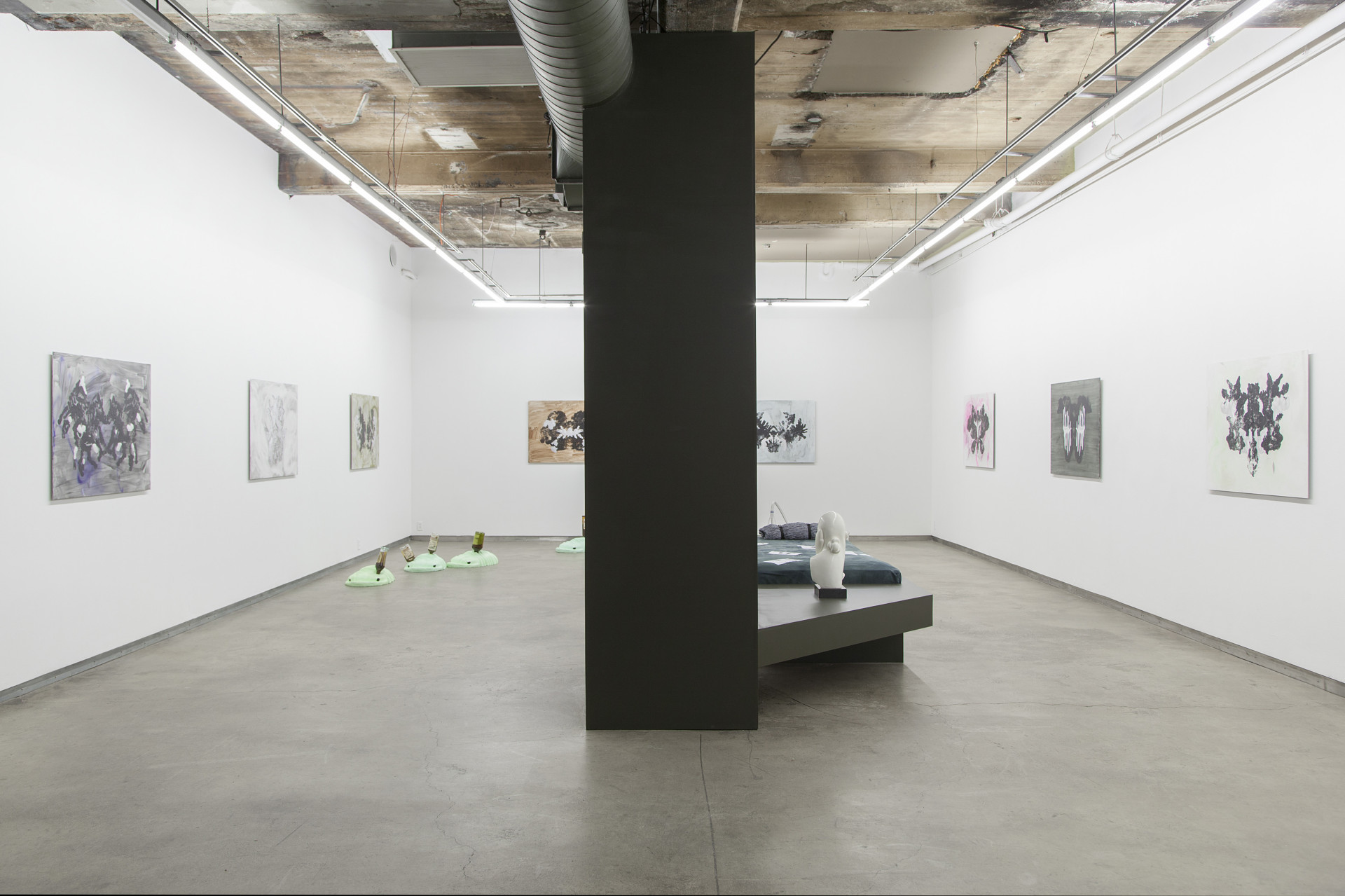
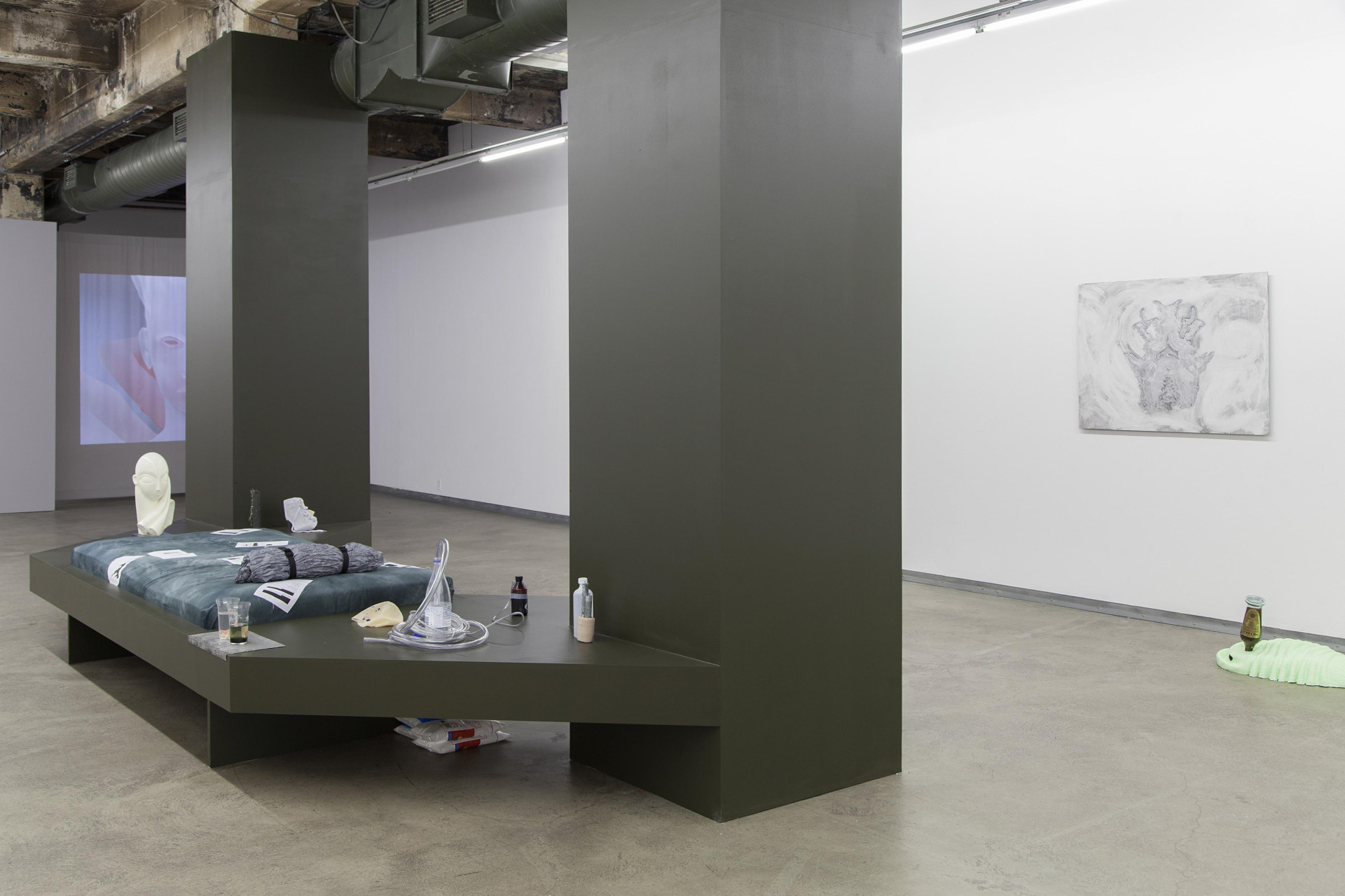

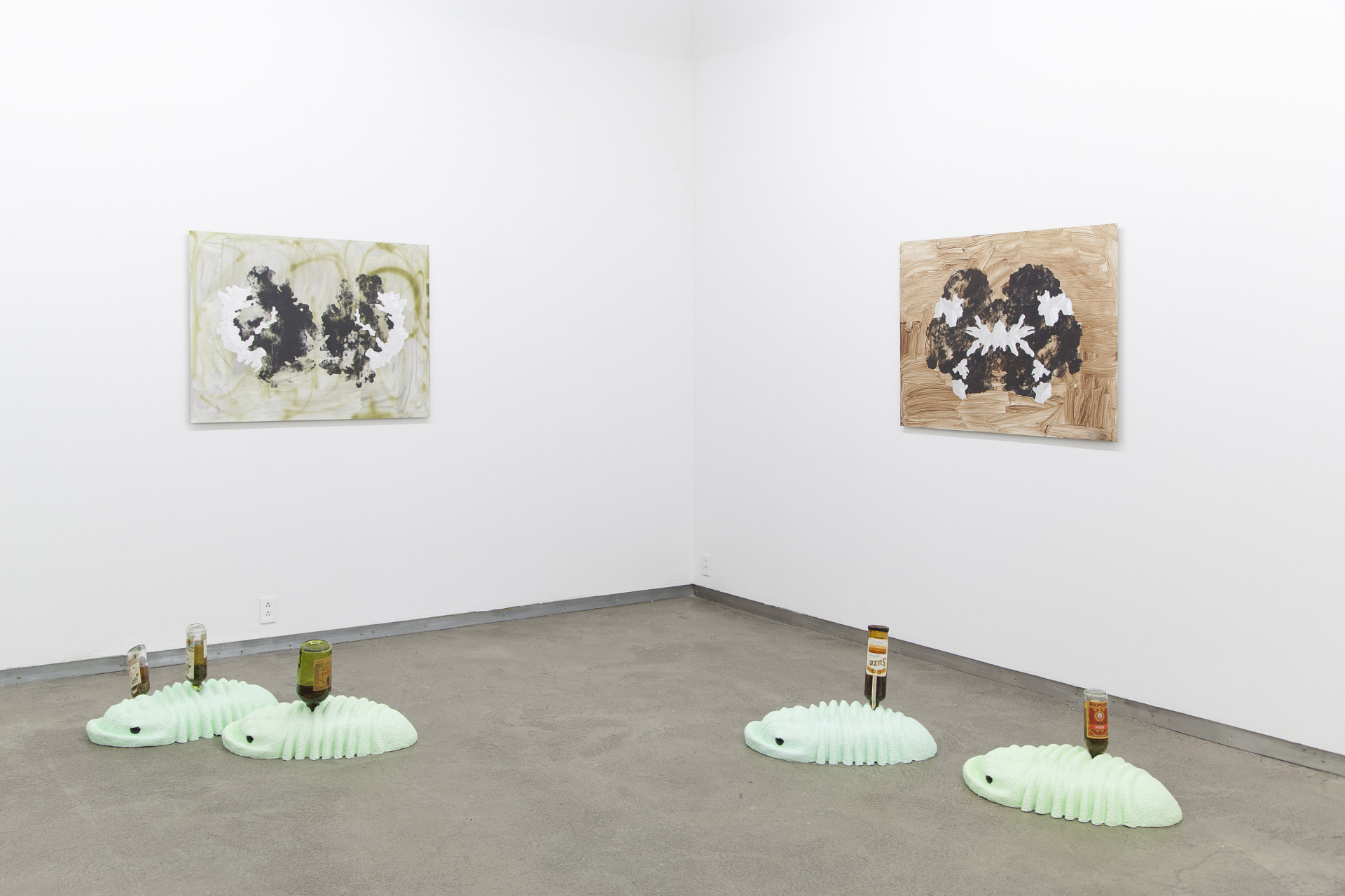
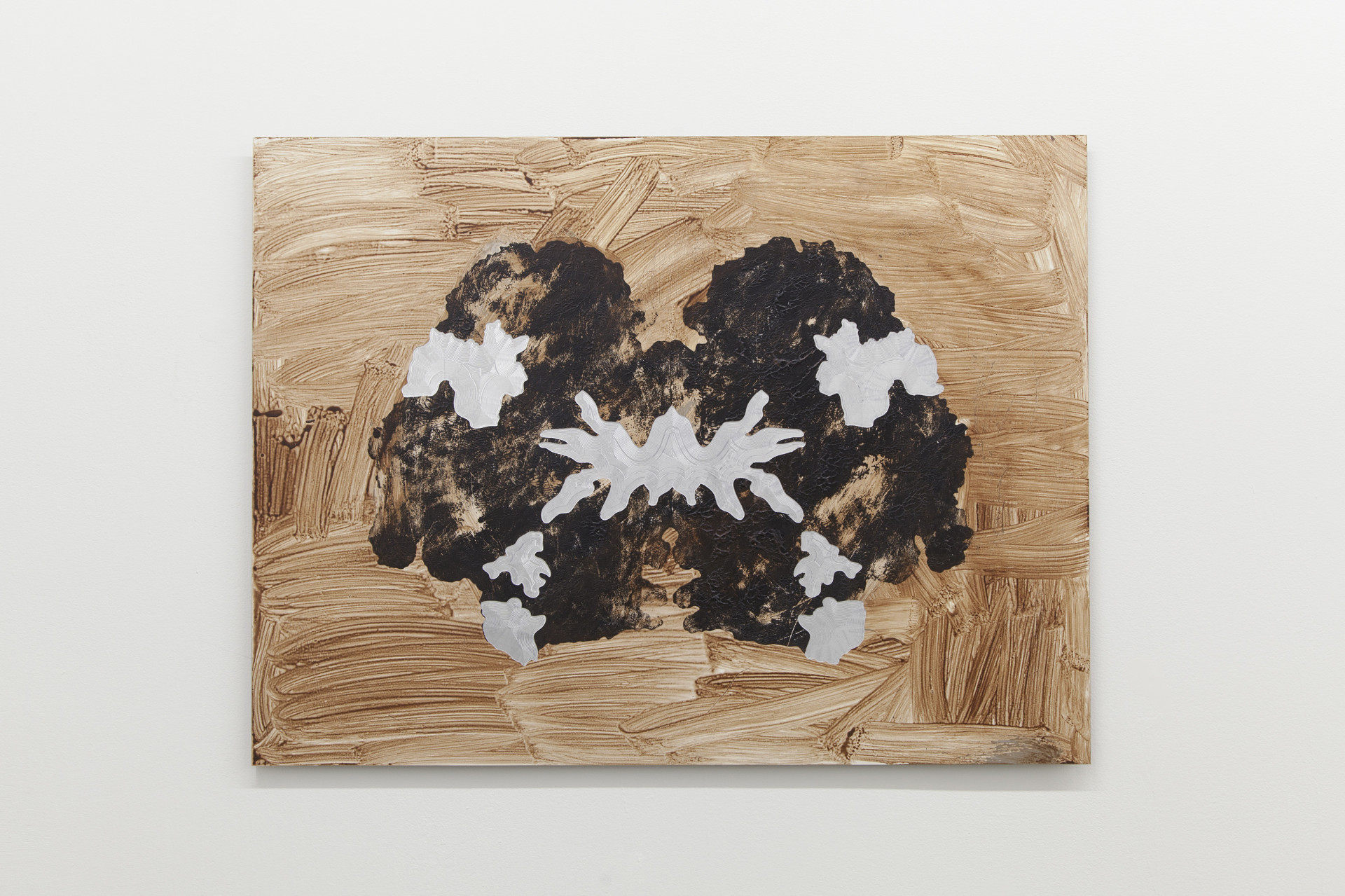
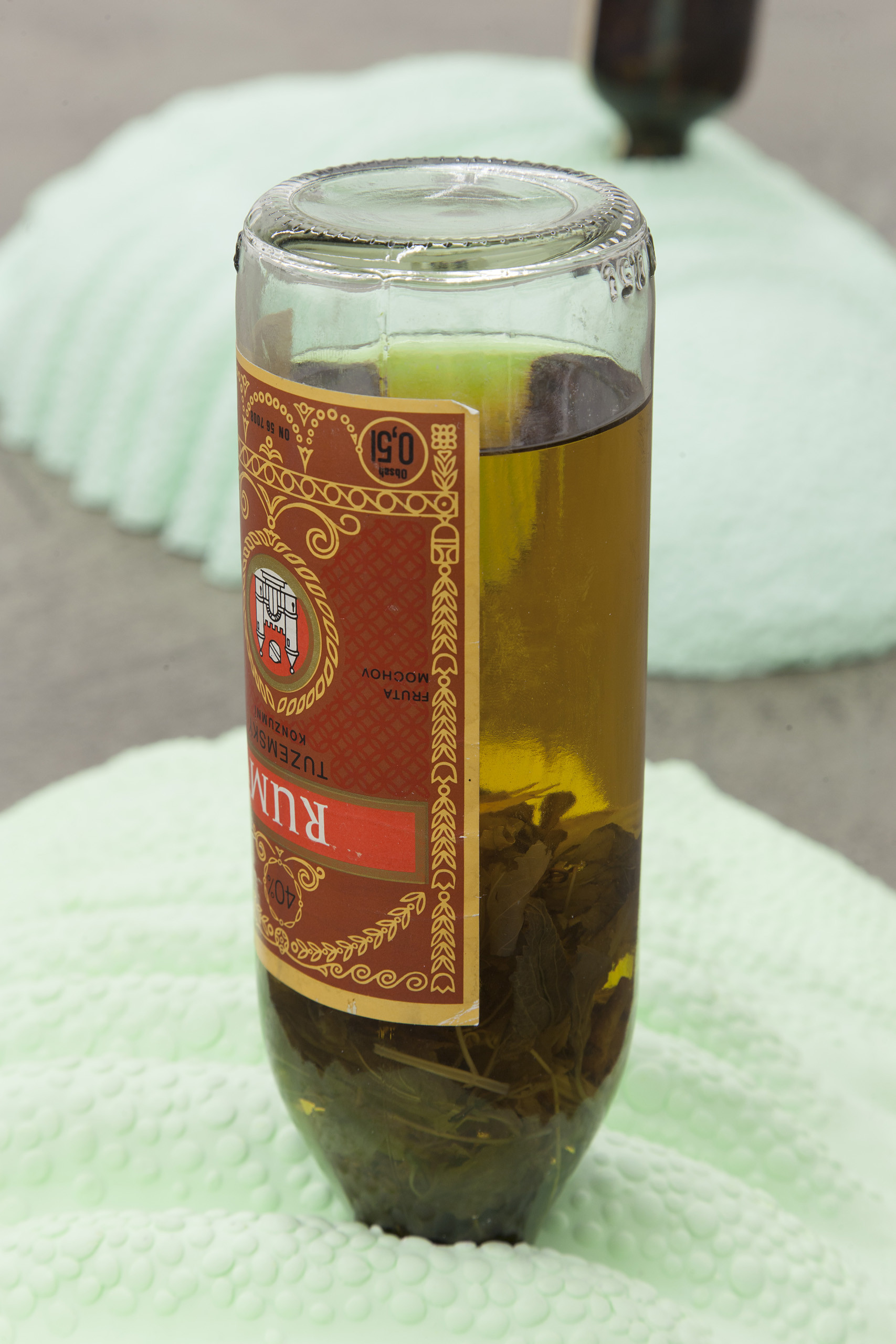
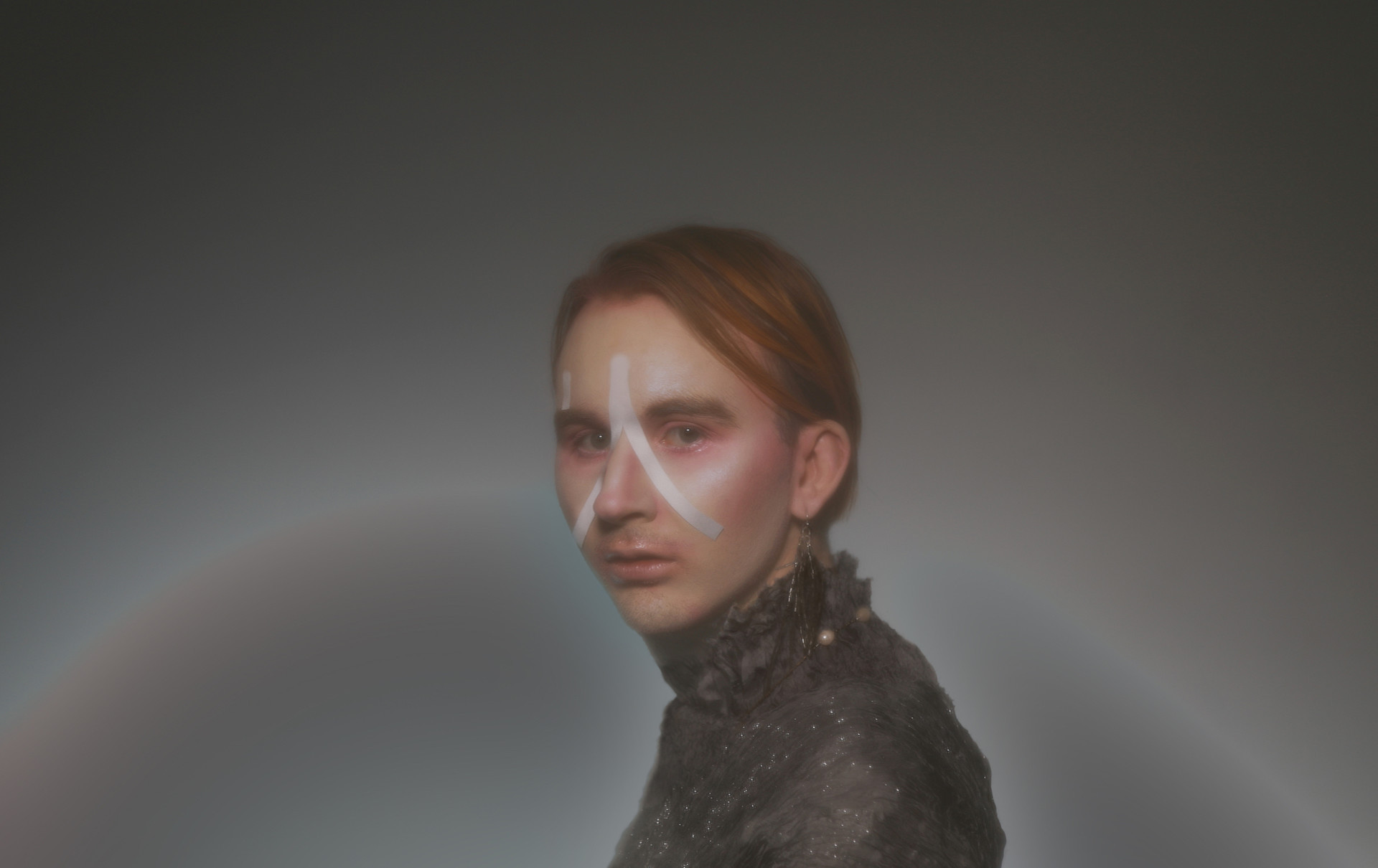
EXERCISES IN CLAIRVOYANCE
Guillaume Adjutor Provost’s exhibition in the Darling Foundry’s small gallery takes an intentionally ambiguous stance. It offers visitors an experience that is both familiar and unsettling—atmospheric, even slightly toxic, as intimated by the title Vapeurs [Vapours]. An initial walk-through of the exhibition raises several questions: Who made which works in Provost’s solo show, which is presented “in conversation with Julie Tremble and Guillaume B. B.”? How were the roles assigned in this conversation, and what traces have they left in the exhibition? Who is speaking in the space? What stance should we, can we, take as viewers? And in thinking of the character on the exhibition card who eyes us from a distance, who is watching us?
For Provost, it all begins with a profound desire to share. Share the artistic space by inviting other artist collaborators to intervene in a solo exhibition and create common ground, an approach he has often taken in the past. Share the creation of the work, which is the result of rigorous dialogue and exchange, even though the floor plan attributes each work to an individual creator. And lastly, share a viewing experience: although as viewers, we don’t have access to the “conversations” that took place between the artists, we are nonetheless an integral part of the resulting exhibition as interlocutors, collaborators, actors. The works exhibited act as clues open to interpretation; signs pointing to an enigma that every viewer must formulate by becoming a psychonaut, an explorer of the spirit.
On the gallery walls, a sequence of ten sheets—or figures according to Provost—display black smears that borrow their motifs from projective tests for analyzing the psyche, the most famous of which is the Rorschach test. Although their shapes are perfectly recognizable, the smeared figures cannot be easily grasped. They stick out. Floating on an aluminium surface devoid of the fold that would have justified its symmetry, each figure is like an apparition revealing the imprint of an animal fossil, or a cluster of corpuscles placed on a slide swabbed with dye and observed under a microscope, or an x-ray showing segments of a body’s organs and skeleton. The images resist any one particular representation. They evoke a thousand things without settling on any one of them, just like the inkblots of the test that inspired them: they are mirror-images, in which you see what you project (you will no doubt see something different than me); essentially, they are images of mutation, of the migration of signifiers, of constant metamorphosis. The work’s title says it well: Nous ne sommes déjà plus les mêmes [We Are Already Different Than We Used to Be].
Echoing these nebulous and seemingly ageless symbols, a small colony of resin sculptures, in the shape of giant trilobites, lies in a corner on the gallery floor. Akin to fossils of millennia-old marine arthropods, they too seem to be caught in a transitional state, as though undergoing a mysterious transformation: holding alcohol vials bearing yellowed labels and filled with herbal sedatives, their shells glow with a mint-green sheen, a seemingly radioactive phosphoresce. The trilobites seem to hover between sleep and intoxication, unless they are about to come back to life—who’s to say that they won’t begin to crawl under the combined influence of valerian and tequila? Here too, the image associations abound (and the title Planète hurlante, evoking the film Screamers, pushes us into a science-fiction and dystopic universe). Here too, the associations remain determinedly free: no reference is imposed on the meaning of the works, which instead seem bent on triggering a swarm of interpretations, new ramifications, unforeseen bifurcations.
Julie Tremble’s Marcel Broodthaers en conversation avec Hideaki Anno et Akhenaton [Marcel Broodthaers in Conversation with Hideaki Anno and Akhenaten] continues the work of networking and branching out through a double-mirroring effect of the very grammar of the exhibition. As the references have been provided, we can rely on them to briefly describe this computer animation video: an opalescent figure with an oversized brain, whose features evoke the elongated face of the heretic pharaoh, gives voice to a poem by the postmodern artist Marcel Broodthaers in an end-of-the-world setting inspired by Anno’s anime series. Here, as in the rest of the exhibition, one must have a sense of adventure first and foremost: psychonauts explore history and forms of knowledge as much as they explore their own psychological associations, the profusion of real and fictional voices, fragments of memory, the movement of figures across space and time, the arborescence of meaning.
The voice says: “I invented the storm that blew up / from the alphabet, / the mirror of rain, and / the alley of corteges. / With this visionary capacity / fabricated by meditation and / recalcitrance over my homework / I could meet anyone I wanted. / Famous [monsters], opera singers…”
On two occasions over the course of the exhibition, Guillaume B. B. will offer a performance in the space that responds to his conversations with Provost and to the exhibition itself. For this purpose, a platform has been set up in the middle of the gallery and adorned with physical clues such as clothes, vampire teeth, and other objects. The presence of this stage creates certain expectations—something is going to happen, something is expected, perhaps a human presence, but we don’t know who or what yet. For most of the exhibition, and for many visitors, this performance will remain virtual, something possible though not realized. Perhaps it is precisely this latency that makes up the whole body of Vapeurs; this empty zone, opposed to all forms of capture, this space of mental projections that sometimes transforms into a scene of desire, a scene in which a subject can form and express itself.
Vapeurs draws on the free exploration of an interstitial terrain where time and space intersect: sometimes, it is an excavation site, sometimes, a stage set, a memory interface, a house of mirrors, or a screen for fantastical projections. This psycho-spatial stratification allows an intensive outpouring of images and signifiers to flow between history and fiction, move between different subjects (artists, collaborators, visitors), and possibly formulate a new space of sharing and new forms of intersubjective connections. “I prefer / those moments when the image within me / fades and the fog thickens,” we hear in Tremble’s video. Silencing the image. Invoking fog. By creating, in the exhibition space, a kind of non-place conducive to spectral apparitions and fragmentary sketches of consciousness, which are sometimes embodied by fictional characters before slipping back into nothingness, Provost and his collaborators strongly assert the possibility of activating a form of collective clairvoyance in these troubled times.
Ji-Yoon Han
Translated by Oana Avasilichioaei
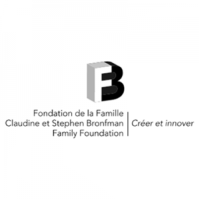 |
|
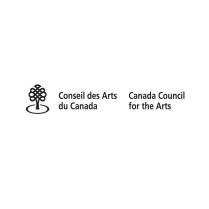 |
Guillaume Adjutor Provost
Born in the Outaouais region, Guillaume Adjutor Provost is an interdisciplinary artist who experiments with exhibition forms, collections and curating. Through a focus on collaboration, his work addresses what has long existed on the periphery of dominant historical discourses: class consciousness, counterculture, social psychology and experiences of sexual diversity.
Curator
Ji-Yoon Han
